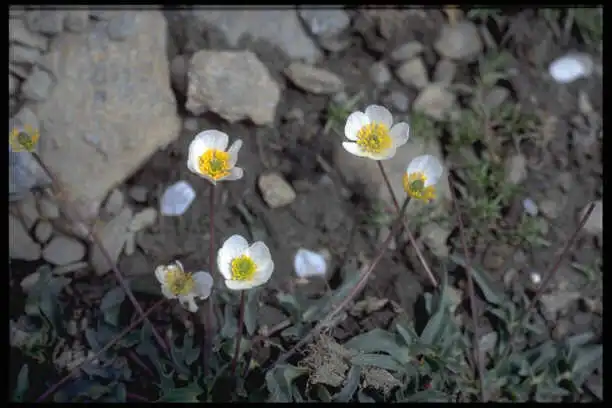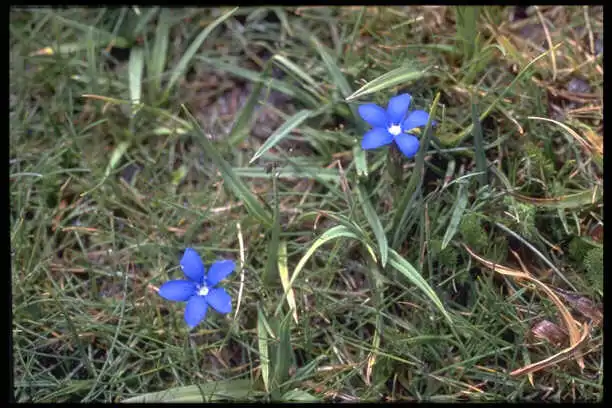Pinguicula nevadensis
TaxonomyPermalink
- Family: Lentibulariaceae
- Genus: Pinguicula
- Name: Pinguicula nevadensis
- Sub-classification (Casper): link
- Publication: Casper in Repert. spec. nov. 66 (1962) 112
Description (In Casper)Permalink
Perennis. Rhizoma simplex breve radicibus adventitiis numerosis filiformibus. Folia 5 - 8 radicalia rosulata integerrima sessilia vel subpetiolata lamina circuitu plus minusve orbiculata superne glandulis sessilibus stipitatisue +/- dense vestita viridia. Hibernacula. Pedicelli 1 - 3 erecti glandulis stipitatis +/- dense obsiti (20) 40 - 55 (85) mm alti uniflori. Flores parvi (10) 12 - 14 (16) mm longi (calcari incluso). Calyx bilabiatus extus glandulis stipitatis obsitus; labium superum trilobum lobis longioribus quam latis, lineari-obtusis; labium inferum usque ad 1/3 longitudinis bilobum lobis raro profunde divisis et divergentibus. Corolla bilabiata “bicolorata” : lilacina lobis albidis; labium superum bilobum lobis ovato-obtusis; labium inferum paulum longius trilobum; lobis longioribus quam latis obovato-oblongis apice rotundatis inter se +/- tegentibus. Tubus infundibuliformis corollae lobos subaequans intus pilosus pilis longis clavatis. Calcar rectum vel plus minusve arcuatum obtusum breve (2) 3 - 4 (5) mm longum tertiam partem tubi limbique corollae vix aequans. Capsula ovoida. Semina scobiformia numerosa.
Chromosomata 2n = 16 (Steiger).
Floret : VII - VIII
Origin and HistoryPermalink
Pinguicula nevadensis is an endemism of the alpine zone of the Sierra Nevada in southern Spain.
Location / MapPermalink
From Spain, Sierra Nevada and Sierra de Alfacar.
(click on the map for better location and relief map)
HabitatPermalink
Pinguicula nevadensis is exposed to very intensive sun radiation in habitat but its leaves remains only slighty reddish colored. The plants can be found near sunny springy slopes and alpine lake. It grows on silicate granite ground. As the species occured at altitudes between 2160 to 3100 m, snow covered the plants for 5 to 7 months !. There are also frequent fog.
Casper publication, add the following species that occured with Pinguicula nevadensis : Carex intricata, Gentiana alpina, Gentiana sierrae, Ranunculus acetosellifolius and Ranunculus angustifolius-uniflorus.
Temperature and ClimatePermalink
- Average temperature for a year : 6°C
- January : max. : 2°C - min.: -10°C
- August : max. : 14°C - min.: 0°C
- Some ponds can
- Nearly no rains in July or August
- Rains in May to June and September to October
- Snow remains on ground from October to May, and sometimes until June.
- Some ponds can still be frozen until june.
Introduction to HorticulturePermalink
I grow some young plants from french carnivorous plants nursery, Nature et Paysages.
Growth and PropagationPermalink
North hemisphere, France near Paris, in a garden - see the map
Life CyclePermalink
In spring, the cycle begins by the opening of the winter buds and the production of the first carnivorous leaves. The first leaves are followed by the flowers. New carnivorous leaves are produced during all the season. Near autumn, or earlier, if your conditions are not optimal, the next hibernacula is revealed in the centre of the rosette. Then leaf production stops and the old leaves decay slowly. The plant (reduced now to a small hibernacula) is ready for winter and for the next cycle.
MediaPermalink
I use the following media : 1 peat, 1 vermiculite, 1 sand (all size).
PotPermalink
In big box, with direct sun for more than 8 hours per day.
CultivationPermalink
The long term cultivation of temperate Pinguicula is difficult : If the summer growing conditions are not optimal, the plants will form very weak hibernacula which easily rot.
Optimal summer growing conditions are: good air humidity, cool temperature and UV lights.This species need a good amount of good sun to grow.
PropagationPermalink
By seeds or using the gemmae produced around winter hibernacula.
PicturesPermalink
|
Impressive Sierra Nevada in southern Spain. This image in its original context, on the page : |
Laguna de las Yeguas in spring, one of the location mentioned in Casper's publication. Altitude is 2600m. This image in its original context, on the page : |
|
Typical habitat of Pinguicula nevadensis, a wet meadow in altitude. Photo : Serge Lavayssiere |
Here at last, Pinguicula nevadensis. Photo : Serge Lavayssiere |
|
The coloration of the leaves reveal the amount of light the plants receive in habitat. Photo : Serge Lavayssiere |
The flowers of Pinguicula nevadensis. Photo : Serge Lavayssiere |
|
Pinguicula nevadensis can reach a diameter of 5 cm. Photo : Serge Lavayssiere |
Impressive cluster of Pinguicula nevadensis in habitat. Photo : Serge Lavayssiere |
|
A cluster of Pinguicula nevadensis in the grasses. Photo : Serge Lavayssiere |
Plantago nivalis Estrella de las Nieves in spanish, an endemic plant of the Sierra Nevada area. Photo : Serge Lavayssiere |
|
Ranunculus acetosellifolius This image in its original context, on the page : |
Carex intricata (Carex nigra). Can be found in wet depressions surrounding glacial lakes. This image in its original context, on the page : |
|
Gentiana alpina. This image in its original context, on the page : |
Gentiana verna subsp. sierrae This image in its original context, on the page : |
If you want to see more species from Sierra Nevada in pictures : link

.webp)

.gif)
.gif)
.gif)
.gif)
.gif)
.gif)
.gif)
.gif)

.webp)
.webp)
